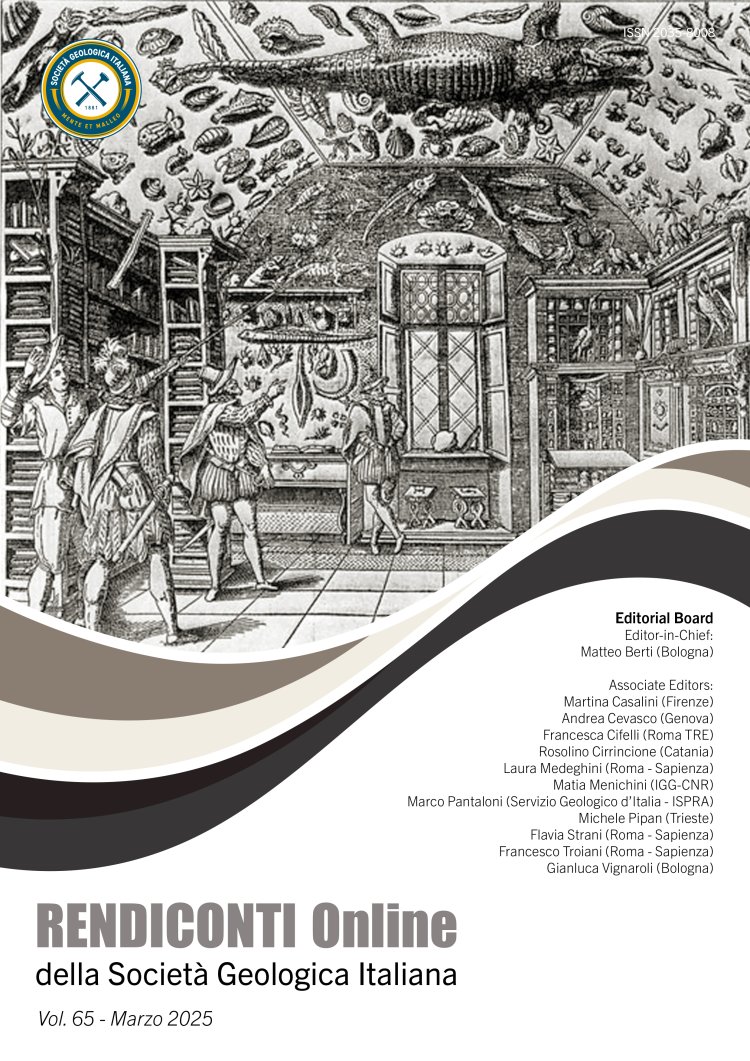
Paleontological elements in the sixteenth-century treatise “Dell’Historia Naturale” by Ferrante Imperato
Marco Romano1
1Dipartimento di Scienze della Terra, Sapienza Università di Roma, Piazzale Aldo Moro, 5, I-00185 Roma, Italy.
Corresponding author e-mail: marco.romano@uniroma1.it
Volume: 65/2025
Pages: 30-44
Abstract
Ferrante Imperato (1550–1625) was an Italian naturalist whose work, “Dell’Historia Naturale”, published in 1599, represents a crucial historical source for natural history and palaeontology. His natural curiosity cabinet in Naples, one of the first of its kind, featured minerals, fossils, plants, and animals, inspiring future museums and scholarly exchange. Focusing on the paleontological aspects
of “Dell’Historia Naturale”, he made significant contributions to the understanding of fossils within early geological thought, with an empirical approach combining field observations and laboratory experiments. While many contemporaries viewed fossils as inorganic or simple ‘jokes of nature’, Imperato proposed their organic origin, anticipating modern paleontological theories. He interpreted fossils like bivalves, gastropods, echinids and ammonites as remains of living organisms, though he hesitated with enigmatic fossils more difficult to interpret as teeth of durophagous fish or belemnites. He proposed interesting arguments on the process of fossilisation, including internal and external moulds of fossils and silicification, also presenting in his work one of the first detailed stratigraphic sections studied and measured in the field. Through extensive correspondence and collaboration with scholars, Imperato contributed to the development of a scientific community and helped advance paleontological and geological knowledge.
Keywords
Get Full Text